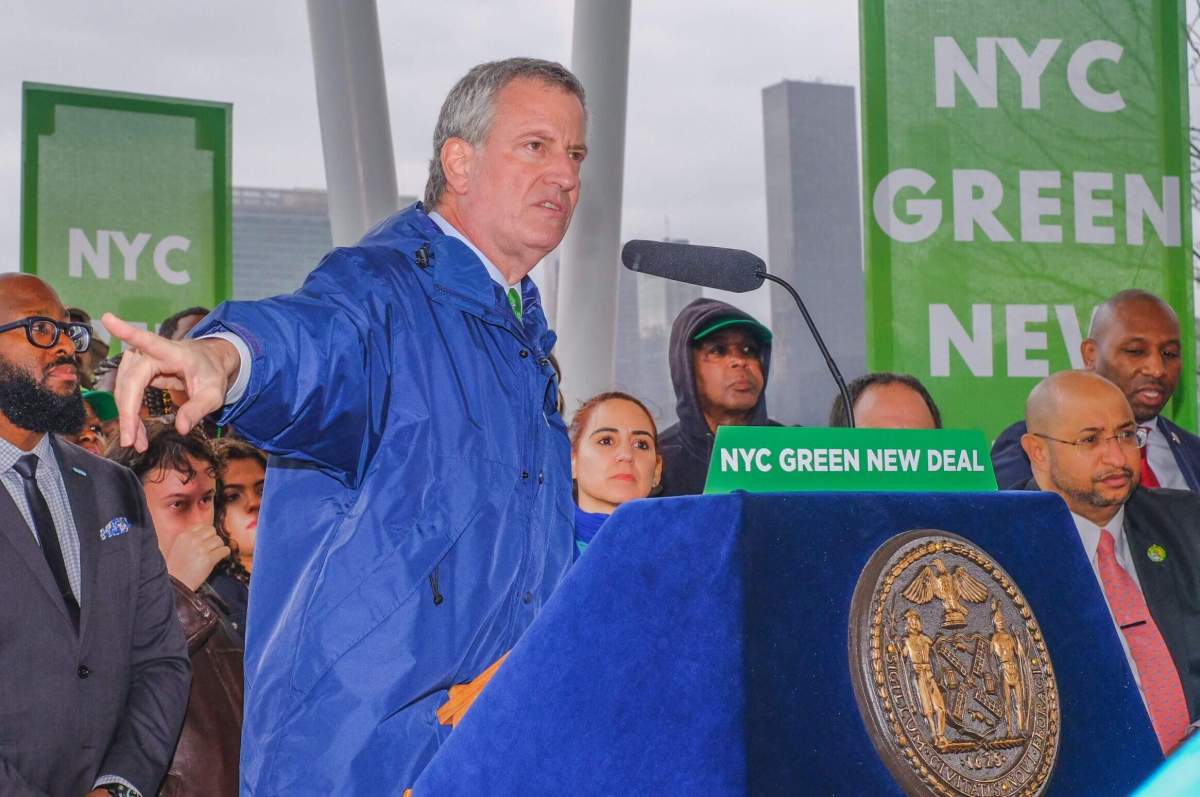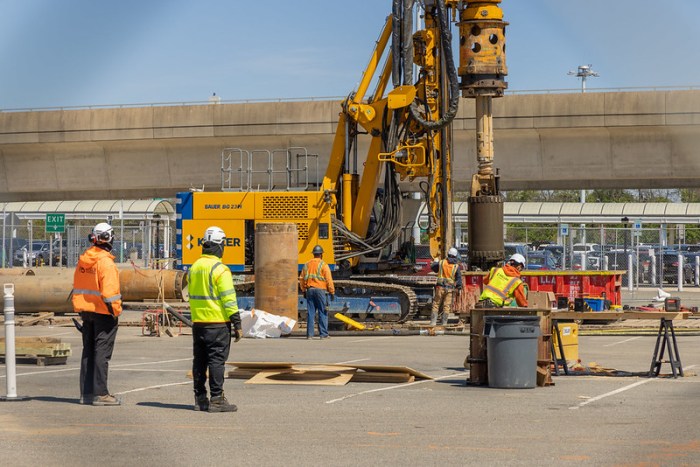Mayor Bill de Blasio is taking a page from Congresswoman Alexandria Ocasio-Cortez in announcing the NYC Green New Deal, a policy shift that will primarily take aim at building emissions and could see $1 million fines on uncooperative property owners year after year.
Unveiled in Hunters Point South Park, de Blasio said developers erecting high-rise buildings must abide by proper windows to reduce the amount of energy required for air conditioning and that violations would not spare buildings in Hudson Yards or Trump Tower.
“We’ve already seen the opposition from the big oil companies and we certainly felt the opposition of the real estate lobby in these last months, but to the credit of everyone here we said we don’t care how much opposition there is,” de Blasio said. “We are not just passing laws and rules, telling people they have to do things differently; this is a massive undertaking. The NYC Green New Deal is a $14 billion effort to change things while we still can.”
De Blasio said the initiative will cut 30 percent of emissions by 2030, which scientists say could be the point of no return for addressing man-made climate change.
Buildings account for the leading cause of the green house gas in the city and de Blasio said he gave the real estate industry five years’ warning to adapt to these new standards when he spoke at the United Nations.
“I want to be very clear. The landlords who play by the rules are not going to have a problem. But any landlord who does not achieve these goals will be subject to over $1 million per year,” de Blasio said. “In some cases, for the largest buildings, it could be over $1 million.”
Other facets of the plan will introduce legislation that would ban steel and glass skyscrapers, unless the they are constructed using specialized materials. The Green New Deal will switch all of New York City’s electricity supply from fossil fuels over to hydroelectric power provided from Quebec, Canada.
Hydroelectric power is generally not considered renewable for the impacts dams can have on the environment. For example, dams along the Colorado River have been deemed by environmentalists as detrimental to the wildlife in and around the waterway, having dramatically changed the temperature and sediment chemistry of the waters.
Hydro-Québec, which will supply the city’s electricity in the coming years, derives its power from over 500,000 lakes and 4,500 rivers, according to the company.
Councilman Costa Constantides, chair of the Environmental Committee, was credited with leading the charge to overhaul the city’s environmental policies.
“Right here in Queens we saw the impacts of Hurricane Sandy … and we needed to take action,” Constantides said. “We’re already starting to see sunny day flooding here in our city. We’re already living in climate change. We’re already seeing more heat-related illness and more flooding … we know we have to act and this legislation had to happen.”
De Blasio pointed to some of the buildings in the newly developed Hudson Yards as an example of skyscrapers that do not use high-performance glass and could be subject to penalties.
































